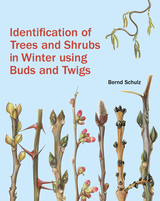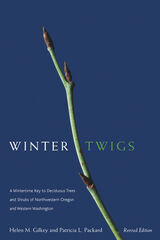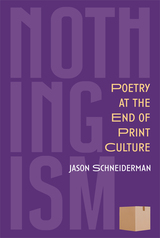3 books about Twigs

Identification of Trees & Shrubs in Winter Using Buds and Twigs, Second Edition
Bernd Schulz
Royal Botanic Gardens, Kew, 2025
An updated edition of Bernd Schulz’s unrivaled practical guide to identifying trees and shrubs in winter.
This second edition of the essential reference book for plant identification in winter is updated with new illustrations and fully revised text.
To many plant lovers winter seems like lost time, but a glance at the twigs of trees and shrubs shows that this does not need to be the case. In contrast to other life forms, trees and shrubs do not die above ground but enclose their shoots for the next year in buds, presenting many characters which hardly change over time. Using these bud and twig characters, deciduous trees and shrubs can be classified reliably in winter, which is particularly important during planting time.
Comprehensive and easy to use, Identification of Trees & Shrubs in Winter using Buds and Twigs contains over seven hundred species identifiable via their winter buds and twigs. The illustrated identification keys are easy to use, and a summary set of keys is provided as an appendix. Detailed descriptions are accompanied with 1,900 illustrations.
This second edition of the essential reference book for plant identification in winter is updated with new illustrations and fully revised text.
To many plant lovers winter seems like lost time, but a glance at the twigs of trees and shrubs shows that this does not need to be the case. In contrast to other life forms, trees and shrubs do not die above ground but enclose their shoots for the next year in buds, presenting many characters which hardly change over time. Using these bud and twig characters, deciduous trees and shrubs can be classified reliably in winter, which is particularly important during planting time.
Comprehensive and easy to use, Identification of Trees & Shrubs in Winter using Buds and Twigs contains over seven hundred species identifiable via their winter buds and twigs. The illustrated identification keys are easy to use, and a summary set of keys is provided as an appendix. Detailed descriptions are accompanied with 1,900 illustrations.
[more]

Identification of Trees and Shrubs in Winter Using Buds and Twigs
Bernd Schulz
Royal Botanic Gardens, Kew, 2018
For many plant lovers, winter seems like a lost time. The bursts of color and distinctive leaf shapes disappear, leaving what seems like ambiguous branches. But there is no need for botanical enthusiasts to hunker down until spring. What we overlook as “dead trees” are simply shoots covered up for the season. If we look closer, we’ll see that trees and shrubs have distinct shapes to their buds and twigs that allow them to be classified reliably in winter.
While most books focus on identifying leaves and other seasonal characteristics, this practical guide is one of the few that will allow gardeners to identify trees and shrubs while they are in their dormant state. It covers more than seven hundred species and includes easy-to-use illustrated identification keys. More than 1,400 color images make it even easier to spot the distinctive pieces of these plants.
While most books focus on identifying leaves and other seasonal characteristics, this practical guide is one of the few that will allow gardeners to identify trees and shrubs while they are in their dormant state. It covers more than seven hundred species and includes easy-to-use illustrated identification keys. More than 1,400 color images make it even easier to spot the distinctive pieces of these plants.
[more]

Winter Twigs, Revised Edition
A Wintertime Key to Deciduous Trees and Shrubs of Northwestern Oregon and Western Washington
Helen Gilkey
Oregon State University Press, 2001
Winter Twigs has long been respected and widely used as a unique guide for wintertime identification of the deciduous plants of northwestern Oregon and western Washington (many of the species covered are also found in British Columbia and Alaska). The first edition of this book has been used by thousands of botany students and other interested individuals to identify plants during the months that they lack the leaves and flowers that most field guides rely on. Intended for use by teachers, students, scientists, amateur botanists, and outdoor enthusiasts, Winter Twigs brings together in one convenient volume the information necessary to identify all of the native deciduous woody plants likely to be encountered in the region, as well as many of the more common escaped cultivated species, Also included are certain species which are normally evergreen but may be deciduous during severe winters. Covered are 82 species representing 35 genera of 17 plant families likely to be found between the Cascade mountains and Pacific Coast in Washington and Oregon as far south as the Umpqua divide, and keys to all species that can be readily identified by winter characteristics. The glossary of botanical terms and more than 100 line drawings that highlight the identifying features of various plants will be especially valuable to students and beginners. To make this new edition as accurate and up-to-date as possible, the nomenclature for 22 species has been updated to conform to the latest scientific literature, with contributions by the Oregon Vascular Plant Checklist Project.
[more]
READERS
Browse our collection.
PUBLISHERS
See BiblioVault's publisher services.
STUDENT SERVICES
Files for college accessibility offices.
UChicago Accessibility Resources
home | accessibility | search | about | contact us
BiblioVault ® 2001 - 2025
The University of Chicago Press









